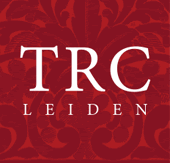Appliqué is a technique whereby one or more textiles are sewn onto a ground material, usually of cloth, but leather may also be found. The cloth appliqués are made by drawing out a basic design on the ground material. Separate coloured cloth is cut out to the approximate shape and then, using a needle, its edges are tucked under and sewn down onto the ground.
There are two types of appliqué associated with Egyptian objects. Firstly there is positive, or ‘real’ appliqué, whereby a piece of cloth is sewn down onto another piece of cloth. Usually the edges of the applied cloth are tucked under to create a neat edge. The second form is called inlay appliqué (also known simply as inlay, and inlay patchwork), whereby an identical pattern is cut out in two pieces of differently coloured cloth and the ‘other’ pattern is sewn into the first piece of cloth, so creating a design that appears on both sides of the material. Often a cord was sewn around the pattern to hide the join between the ground material and the inlaid pattern. This particular form of appliqué is no longer widely used, but was especially popular during the medieval period.
In general, the production of this decorative technique was and remains the preserve of male embroiderers, but changes started to occur in the late twentieth century as more women and girls were taking up this profession, but they work from home rather than in public.

